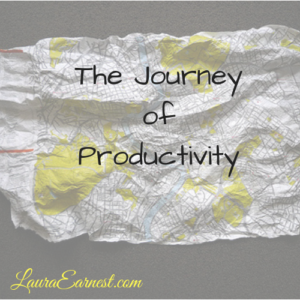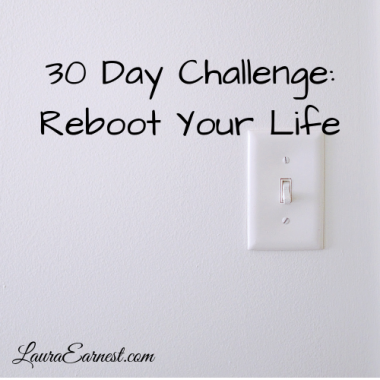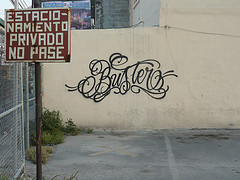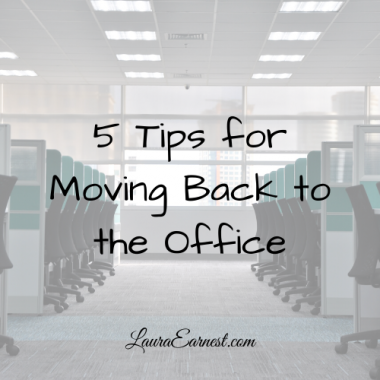
The Journey of Productivity
It’s really interesting to me that people invariably understand that in order to get to a destination, you have to have some idea where it is. Once that is known, a strategy for getting there is decided on. In the old days, it was a map and/or turn by turn directions. Now we use GPS to do the work for us.
But in spite of this familiar set of actions we perform every time we go somewhere new, most people don’t understand that this same techniques can be applied to achieving your goals.
Journeys and Maps 101
So let’s do a beginner’s overview on journeys and maps.
When you want to go somewhere you’re not, you take a journey.
The path you travel between two physical locations is the process of being on that journey.
A map is a guideline that will tell you, in general terms, how to get between where you are and where you want to be. You can choose to deviate greatly, or follow it to the letter.
The map doesn’t spell out everything you may encounter. It doesn’t show where there may be traffic jams, nor where the way may be stopped due to other circumstances. It also doesn’t show items you may want to pursue along the journey, but show up as you travel. Passing them by leaves you the poorer for the lack of the experience (And yes, I still regret that I didn’t stop at Honest Joe’s Tourist Trap on one of my journeys)
Destination vs Journeys
I’ve heard it said that it’s not about the destination, but the journey. I’m not so sure that I believe that entirely.
I believe that the destination is important, because otherwise how will you know where your re going?
I believe that the journey is also important, because adherence to a pre-planned step-by-step map causes you to miss many opportunities and experiences.
So it’s not just about the journey, just as it’s not just about the destination. You need to have both to maximize your experience.
Productivity Journeys
The same exact concepts in a physical journey apply to your productivity journey.
You will have to determine certain aspects of your destination:
- Where are you going?
- Why are you trying to get there?
- How will you know when you’re done?
In addition, you will need to know location aspects of your journey:
- Where are you now?
- What is a good path to get to your destination?
The better you can define the destination aspects of your goal, the easier it will be to determine location aspects of the journey.
Where are you going?
Deciding your final destination is determining what your goal is. The specificity of what you are going to do makes a difference in how you will get there.
If you decided to go shopping, shopping at your local grocery is different than shopping at Harrod’s in London. You can drive to the grocery, but Harrod’s will probably involve a different mode of transportation. If you want to walk on Park Avenue, New York looks very different than Sheboygan WI. And no matter where you are, you will have to drive to Sheboygan at least part of the way.
If you decided to write a book, there are differences between having a rough draft, self-publishing on Amazon and having a book in a bookstore. Each of these goals has different methods of approaching it to match the different goals.
Knowing where you are going will form the framework of the whole effort.
Why are you trying to get there?
The next thing to consider is why you are attempting to do this thing. This is important from the aspect of determining if the journey is worth it, or if there is a different way to approach the task.
If you need to buy candy for Halloween, you could drive to Hershey PA. However, it would be the same candy that you picked up at the local Costco. Same results, less time and effort. There is nothing to be gained by getting the candy from the source.
If you are trying to get a promotion at work, and education is valued at your company, it would make sense to pursue further education. However, if the goal is to get further education in finance, studying architecture won’t get the desired outcome.
Knowing why you are doing something allows you to check that you are truly on the right path.
How will you know when you’re done?
We’ve all had never-ending projects. Especially when things revert back to a former state without our vigilance (think housework here – you’re never truly finished with housework). However, making sure that your project has a concrete done point allows you to finish the project (even if it will come around again), and also provides a measure to know if you are on track. If the action you are currently taking is not leading to the end point, don’t do it.
Where are you now?
This is essential to the start of any journey. If you are trying to go to Paris, the start of the journey is very different if you are in Washington or Spain. For projects, you need to assess where you are to determine what you need to do. A good inventory lets you know what you are starting with and what you may need to obtain to make the project a success. Have a project to clean your sidewalks? You’ll need to know what tools you have on hand. A broken pressure washer will be a hindrance, rather than a useful tool.
What’s a good path to get to your destination?
Not all paths have to be straight, but as we know from math, the shortest distance between two points is a straight line. You can get to Florida from New York by traveling north, but it’s much more direct to go south. Figure out what a good direction to start in is. (But don’t plan out the entire trip…things happen).
Stoppages and Interesting Side Paths
One of the best things about traveling is all the unexpected things you run across. The best drive I ever had to Florida was the one where my husband said we could stop anywhere…and so we pulled in to South of The Border and spent some time being tacky tourists.
If you are working on a project and something comes up that looks interesting and relevant, don’t be afraid to investigate it. Sometimes these things are a total bust, but sometimes they reveal a memorable experience.
Recalibrating
One of the things I love about my husband’s old GPS is the irritation that would creep into the announcer’s voice when we went off path. I could almost hear the sigh before she uttered, “Recalibrating…”
With anything we do, we can get off track. Sometimes it is unintentional as we get sucked into a total time sink. But it could also be when we decide to make a stop at an interesting waypoint.
It’s important to be able to recalibrate your journey from where you are. You don’t have to stick to the original plan as long as you have the ability to make a new one.
Summary
Physical journeys and productivity journeys use the same steps and guideposts. Know where you’re going (and why), where you are, and have a general plan, and you’ll get to where you want to go.
Taking Action
Do you have a plan that is too vague, too structured or going in the wrong direction? Figure out how you would handle it on a physical trip and recalibrate.
Image by rhodes. Licensed under Creative Commons. Text added.




